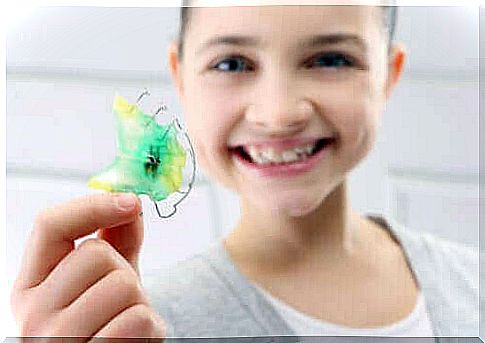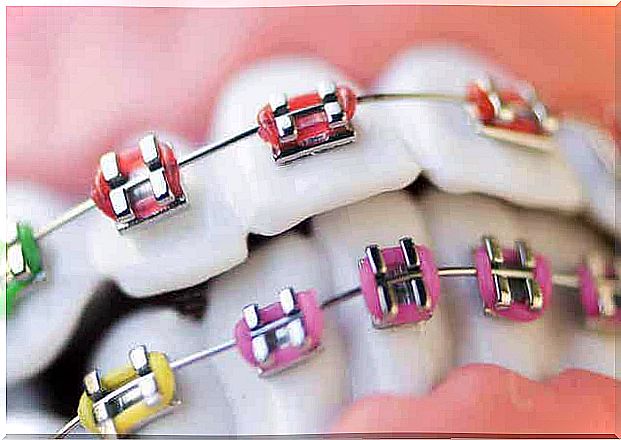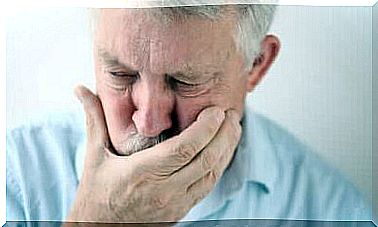Orthodontics In Children: Everything You Need To Know

Often there are abnormalities in the development of the bones and the position of the teeth during childhood that can lead to biting problems. Orthodontics in children is the treatment that allows us to correct these conditions from an early age.
Guiding bone growth, correcting the position of the jaws and teeth, or aligning the teeth neatly is what this therapy tries to do. A correct ratio of the upper and lower teeth allows the child to use the functions of the mouth normally.
By acting at an early age, it is possible to treat problems from the start and prevent them from getting worse. These treatments are not only more effective, but also more enjoyable, faster and even cheaper! Read on and find out all about orthodontics in children!
When is pediatric orthodontics necessary?
There are many reasons why children may need orthodontics. At this age we have the advantage that the bones are still growing and the teeth adapt more easily to a new position. This makes it possible to solve many situations of malocclusion such as:
- Narrow Palate: The palate is narrower and has a dome-shaped area in the center.
- Class II or retrognathia: the upper jaw is too far forward in relation to the lower jaw.
- Class III or prognathism: the lower jaw is set far forward.
- Open bite: the upper and lower teeth do not come into contact with each other when the mouth is closed.
- Cross bite : When biting, the lower teeth are in front of the upper teeth.
- Dental abnormalities: teeth are outside the dental arch, on top of each other or crooked.
A dentist diagnoses malocclusion after an oral exam and additional tests. There are some symptoms that parents may observe that indicate the need for orthodontics in children:
- Premature loss of baby teeth.
- Dysfunctional habits: thumb sucking (Spanish link), nail biting, bottle or pacifier use for more than 2 years, mouth breathing, atypical swallowing.
- Difficulty pronouncing some phonemes.
- Crooked teeth or a disharmonious face.
- Pain, noises, or trouble biting or eating.
It is important to observe the process of tooth growth and the way children chew, swallow and speak. This way you can discover situations that need attention. That way you can notify your dentist as soon as possible and he or she can assess the situation.
Regular check-ups by the dentist

Early and regular visits, every six months, allow the dentist to detect problems. In addition to examining the mouth and monitoring the growth process of the child’s bones and teeth, the dentist advises parents on oral care.
When detecting a disease or condition, the dentist will carry out the appropriate treatment. If there is a biting problem that cannot be solved, the dentist will refer the child to an orthodontist.
This professional will thoroughly examine the teeth, mouth and bite. It may also be necessary to take some x-rays, pictures or impressions of the mouth to make models and study the case. The orthodontist can also inquire about the way the child eats and speaks, their habits and any biting problems.
Taking your child for an early consultation does not mean immediate treatment is required. Early diagnosis allows the orthodontist to choose the best alternative and the ideal time to apply it.
When using orthodontics in children, it is easier to move teeth and shape the growing bones than in an adult. It also prevents the deviation from getting worse and complicating the whole situation.
Types and Options for Orthodontics in Children
Orthodontic treatment corrects occlusion and alignment problems through continuous pressure on certain areas of the bones or teeth. As a result, the bone tissue grows in a certain direction or the teeth come into the correct position.
There are several options for orthodontics in children from which to choose. This choice depends, among other things, on the needs of the situation and the age of the patient. Below we discuss the different types of braces.
Functional braces
This type of orthodontics in children is useful during temporary or mixed dentition, i.e. when only baby teeth or both baby teeth and permanent teeth are present in the mouth.
They are removable braces whose design acts on the position of the muscles responsible for mobilizing the jaw. The direction and intensity of the muscle forces are controlled, which over time also translates into structural changes in the mouth.
Interceptive Orthodontics
These are removable device treatments that orthodontists use during childhood, while the skeleton is still developing. This type of orthodontics in children corrects abnormal bone growth and guides the maxillofacial structure to develop correctly.
It uses a removable brace that the patient can put in and take off before eating and brushing their teeth. However, the more hours a day the braces are used, the better the results will be.
In general, a bracket consists of acrylic sheets with other fittings, such as metal arches, springs or screws. In this way, the bracket exerts active mechanical force on the structures to be modified in order to:
- guide bone growth (Spanish link) and expand the bone.
- specific dental movements.
This category also includes a band for external use, for example useful in the treatment of class III malocclusions. The child uses this outer brace at night, while sleeping.
Fixed braces
Fixed orthodontics in children consists of placing locks on the tooth surfaces, which are connected by a metal arc. As the name implies, the brace is attached to the teeth and cannot be removed by the patient.
This orthodontic system for children is able to move each tooth individually in any direction. It is usually placed in the mouth during adolescence when the tooth change is complete, but the bone is still growing.
Sometimes it is necessary to supplement the treatment with tooth extractions, especially if there is a lack of space to rearrange the teeth. This approach is especially effective in cases of:
- diastema.
- crowding.
- rotated teeth.
- other dental wrong positions.
Although we associate fixed orthodontics with the classic use of braces and metal wires, the truth is that there are many variations to make patients feel comfortable with their braces.
There are more aesthetic options that use ceramic braces, sapphire braces and even some that are placed on the inside of the teeth so that they are not visible. The rubber bands come in different colors, so that the child can change and combine them as desired.
Clear aligners
This pediatric orthodontic option uses clear aligners that the patient can put in and out themselves. The operation of these bits is similar to that of braces, but can be more pleasant and easier to use.
The dentist makes a series of special clear plastic mouthguards. These are periodically replaced to apply the required forces to mobilize the teeth towards the desired location.
The patient must remove them before eating, then clean them and brush their teeth before they can be reinserted. However, they must be worn most of the day, at least 22 hours a day, for the treatment to be effective.
Braces Care and Recommendations
The use of orthodontics in children implies attention to a range of measures that make the treatment successful and the rest of the mouth healthy. Following are some things that parents should consider when their children undergo treatment with the orthodontist.
dental hygiene
It is essential to pay special attention to oral hygiene. Braces promote the accumulation of bacterial plaque, increasing the risk of problems such as caries and gingivitis.
Tooth brushing should be done every day, after every meal and all tooth surfaces should be cleaned carefully. A soft-bristled toothbrush and fluoride toothpaste should be used for this.
In addition, the child should use floss and mouth rinses once a day if their dentist recommends it. Patients who wear removable braces should remove them to clean them and brush their teeth as usual.
In the case of very young children who wear braces, cleaning is more difficult, but they should take the time to do it correctly. The use of special orthodontic brushes, interdental or electric, can be of great help to accomplish this task and reach all areas.
Watch your diet

When removable braces are used, they are removed from the mouth during the meal and the patient can eat normally. However, for children with fixed braces, some caution with certain foods is necessary. Avoid very hard or sticky foods that can break or loosen braces such as:
- sweets
- nuts
- chocolate
- apples
- very chewy food
Dealing with discomfort
The beginning of orthodontic treatment in children can be uncomfortable. Not only is there a foreign object in the mouth, but the forces exerted by the braces can also cause pain. In general, these sensations are temporary and the child gets used to them. In any case, the dentist can prescribe medication for these critical moments.
Injuries to the mucous membrane of the mouth (Spanish link) due to friction or trauma with the devices are also common . They usually disappear on their own. Using fluoride toothpaste is important to avoid the associated tooth sensitivity.
Go to checks
It is vital to keep scheduled appointments with the orthodontist and to follow the instructions carefully. The orthodontist will monitor and adjust the treatment to make progress. It is critical to consult the professional in case of any problem, accident or breakage of the brace.
Removable braces and elastics should be worn for as long as recommended and care should be taken not to lose them. The length of time that special aids have to be placed in the mouth must be respected. This prevents them from returning to their original position.
How long will they be needed?
The duration of orthodontic treatment in children depends both on the problem to be solved and the tools used. In general, the treatment ranges from 18 to 36 months, but this also depends on the cooperation of the patient.
During treatment, the child must visit the orthodontist regularly, often once a month. During these check-ups, braces are adjusted and progress is also monitored.
Orthodontics in children helps to prevent future complications
Carrying out orthodontic treatment on children helps to solve any problems in the child’s mouth. These treatment options will allow them to bite, eat and talk normally, and will also improve their smile.
However, it is important to remember that acting early prevents many problems in the future. That’s because treatments during childhood are faster, more comfortable, more effective, and cheaper. Resolving bite disorders during childhood helps children to have a healthy mouth in adulthood.








